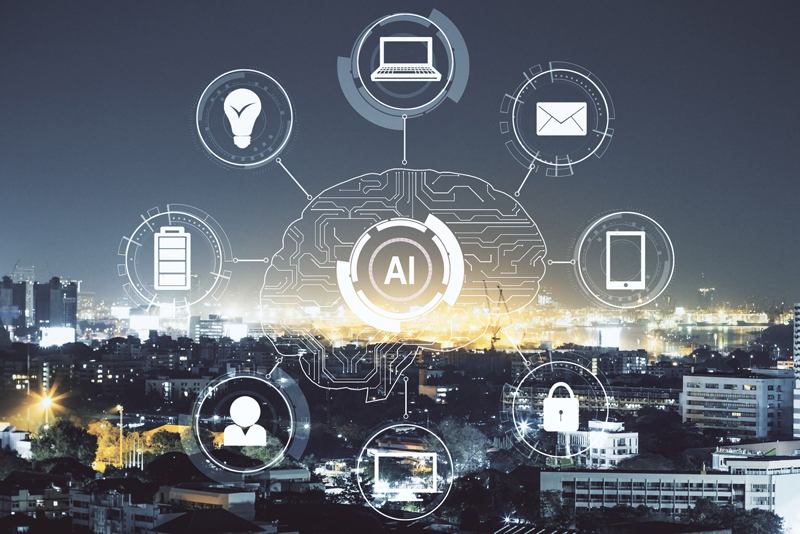
Due to rapid expansion of data sources, improved algorithms and powerful computing power, businesses are now turning to Artificial Intelligence to gain insights and engage more productively with customers. It also helps to solve most business problems by processing data to make predictions based on patterns, trends and other factors that are valuable for the business. Any business needs accurate data on supplies, inventories, customers and so on to increase productivity and efficiency. Data is the core of AI algorithm and having access to data helps to analyze the data and channel it into the right system. Accuracy of the data used is extremely crucial. When beginning to adopt AI, businesses discover that their data is in many different formats. Associating with a professional data conversion service helps to convert all paper-based data into a uniform digital format so that companies can use the information effectively and gain a competitive edge.
With accurate data and the right AI technology, businesses can analyze deeper data to improve customer service, provide real-time support to users, and automate workloads. AI is now widely used in many industries and is becoming the game changer for almost all businesses.
AI is a branch of computer science which is about building smart machines that are capable of performing tasks that typically require human intelligence like visual perception, speech recognition, decision-making and translation between languages. AI is an interdisciplinary science with multiple approaches, but advancements in machine learning and deep learning are creating a paradigm shift in virtually every sector of the tech industry. With every year AI is evolving and it is becoming the core of everything that humans are going to interact with in the future. AI technology is divided into three types based on their capacity to mimic human characteristics and their real world application.
- Artificial Narrow Intelligence: This is the only type of AI that we have achieved so far. Narrow AI is a goal-oriented technology that is designed to perform single tasks like facial recognition, speech recognition, searching the Internet etc. Although it looks like an intelligent technology, it operates with a narrow set of constraints and limitations and so it is called Weak AI. It stimulates human behavior based on a narrow range of parameters and is unable to replicate human intelligence. Narrow AI along with machine learning and deep learning have led to several developments in various fields, for e.g. in the healthcare sector, it is employed to accurately diagnose various diseases including cancer via human-like reasoning and perception; and in the automobile industry, it is used in the vision recognition capability of self-driving cars. Here, it utilizes NLP or natural language processing to perform various tasks. NLP is used in chatbots and similar AI technologies and by understanding speech and text in natural language, AI is programmed to interact with humans in a natural, personalized manner. Other examples of Narrow AI are Siri by Apple, Cortana by Microsoft and other virtual assistants, disease mapping and prediction tools, drone robots etc.
- Artificial General Intelligence (AGI): This is also called strong AI or Deep AI that has general intelligence that can imitate human intelligence or behavior with the capability to learn something and apply it for problem solving. It has the capability to think, understand and act just as a human, in any given situation. AI researchers and scientists haven’t achieved this level of AI but they are working together to find a way to make machines conscious, programming a full set of cognitive abilities. To grow to the next level, machines have to grasp experimental learning for improving efficiency on singular tasks, and also gain the ability to apply experiential knowledge to many different problems. The only example that has come close to AGI is Fujitsu-built K, one of the fastest supercomputers.
- Artificial Super Intelligence: The third type of AI is hypothetical AI that does not mimic or understand human intelligence but has the ability to be self aware and surpass the capacity of human intelligence and ability. The third type of AI, artificial super intelligence will be more capable than humans. In this stage, AI evolves to be similar to humans in terms of experiencing emotions and experiences. It is expected to be better than humans in maths, science, sports, medicines, emotional relationships etc. It has a higher level of memory and the ability to process and analyze data. However, such machines may be available only in the far future.
AI capability has improved and it is time for organizations to take advantage of the predictive capabilities of AI applications. Businesses can improve productivity with the use of artificial intelligence and machine learning. But it requires access to accurate digital data that are necessary to derive valuable insights that helps to make the right business decision and propel the growth of the business. Providers of data entry services can help convert all data into a uniform digital format that can be effectively used in AI applications.



